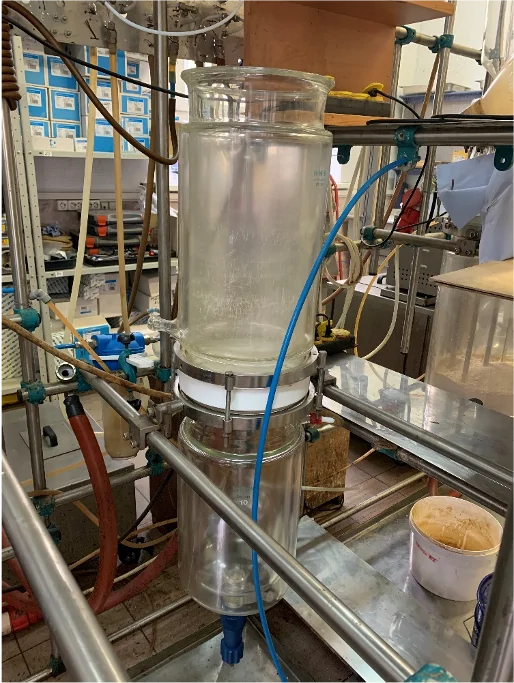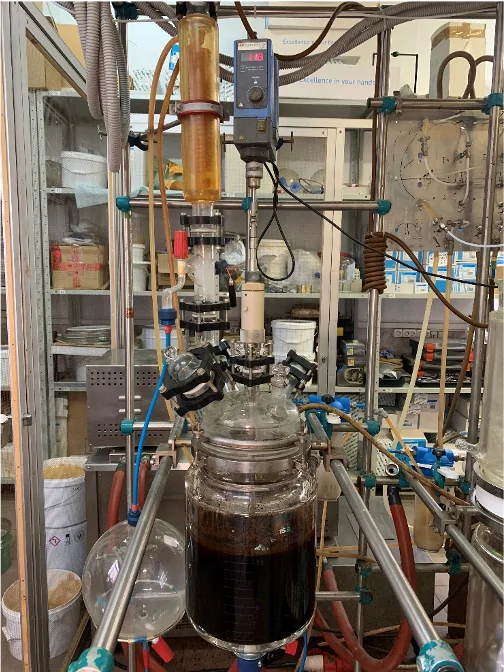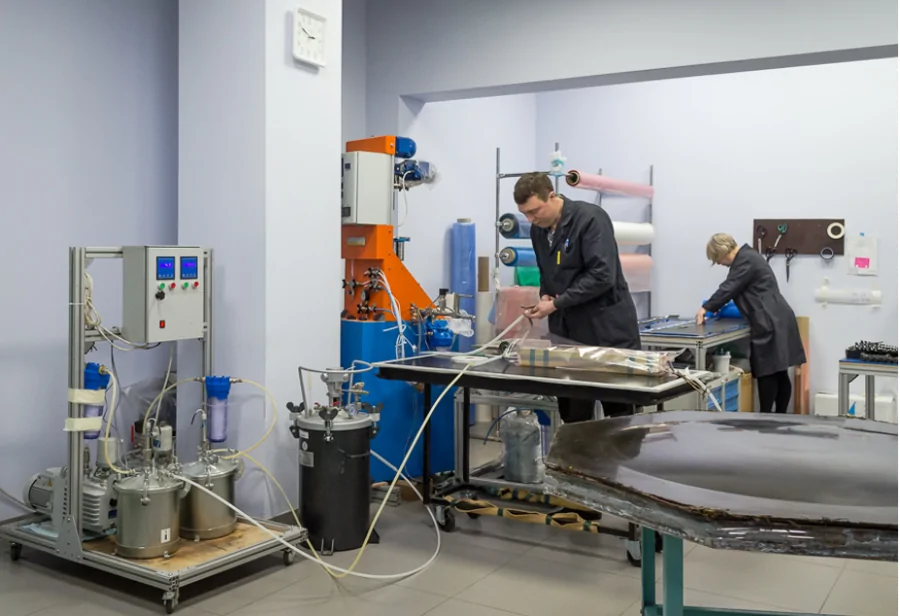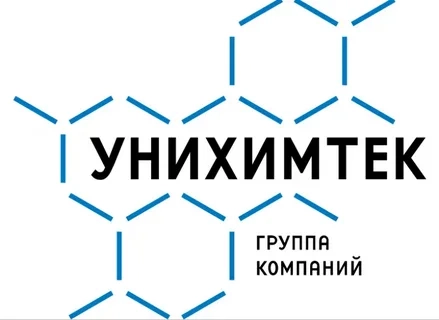Laboratory of Chemistry and Technology of Composite Materials
The laboratory team has developed epoxy binders and prepregs that have found application in industry. The PCM parts obtained from them are used in the production of Russian UAVs, IL-112 and MS-21 aircraft, as well as as part of spacecraft. Heat-resistant binders based on bismaleimides and phthalonitriles are being developed in the laboratory.
PCM with heat-resistant matrices are already in demand in the space industry and the engine industry, and each new improvement in binder technology expands the potential of composites. Low-melting phthalonitrile monomers were developed in the laboratory, which made it possible for the first time in world practice to obtain high-temperature resistant composites by effective injection methods. This breakthrough aroused the highest interest in the aerospace industry and opened up prospects for real-world applications of phthalonitriles as matrices for PCMs.
One of the new objects of the laboratory's research are "smart materials" based on electro-adhesive polymers and actuators (actuators) obtained with their help. Ionic electroactive polymer composites are capable of deforming in a predetermined manner when a potential difference is applied. This property opens up the possibility of their application as materials with controllably variable geometry, which can be used not only in the aerospace industry, but also in various household devices.
- NMR spectroscopy
- High-efficiency liquid chromatography (HPLC)
- Thermogravimetry (TG)
- Differential Thermal Analysis (DTA)
- Differential Scanning Calorimetry (DSC)
- Improved organic synthesis
- Scanning electron microscopy (SEM)




Research directions
Development of heat-resistant materials by 3D printing using stereolithography methods
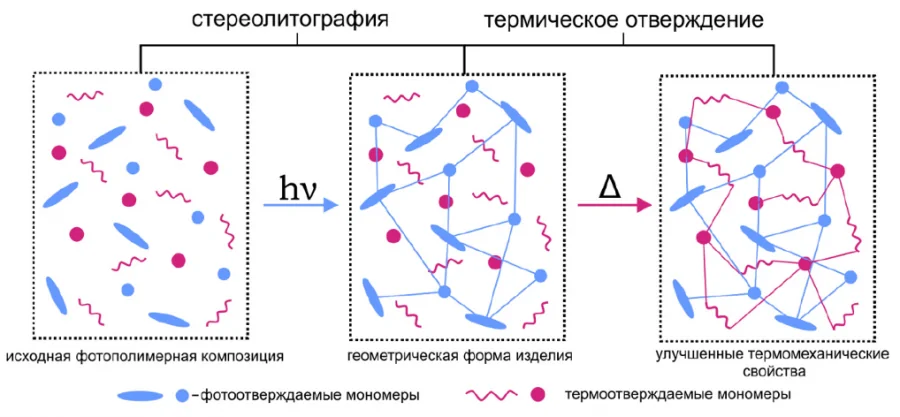
Additive technologies, also known as 3D printing, are currently widely used in the production of product prototypes, microhydrodynamics, electronics, energy, robotics, as well as in the production of lightweight and durable materials for the aerospace field.
Stereolithography is characterized by the highest resolution among additive technologies and allows the use of more heat-resistant thermosetting polymers instead of thermoplastic polymers used in the widespread method of 3D printing by layer-by-layer deposition (FDM).
A significant problem limiting the use of polymer products is the low operating temperature. Thus, one of the most heat-resistant thermoplastic polymers, polyesteresterketone, has a glass transition temperature of 143°C. The range of monomers used in stereolithography is usually limited to substances containing acrylic and epoxy groups, which, after photopolymerization, are characterized by even lower thermal properties. Therefore, the creation of a photo-curing composition with increased thermal stability opens the way for this method in the aerospace field: for serial 3D printing of parts experiencing high friction or under high temperatures and pressures; for prototyping structures necessary for modeling hot liquid or air flows; for growing master models for use in injection molding.
Currently, selective laser sintering and melting (SLS, SLM) of ceramic or metal powders are used to obtain products with high thermal and oxidative stability using additive technologies. However, products obtained using SLS and SLM technologies have the following disadvantages: high fragility and high weight of products; difficult to predict shrinkage of the product during production; high cost of equipment and consumables. Our group is developing a heat-resistant material obtained by stereolithography of a photopolymer composition containing phthalonitrile and maleimide groups in the structure of one of the monomers capable of photosopolymerization with acrylates or methacrylates.
Such monomers will make it possible to implement a double-curing approach for obtaining heat-resistant materials: photopolymerization for molding the geometry of the product in a 3D printer and further thermal polymerization of the molded material to improve the thermomechanical properties of the material.
Acupoints based on electroactive materials

The most important criterion determining the direction of development and optimization of technologies for use in spacecraft is mass. The use of bulky, heavy materials can significantly limit the capabilities of a space mission. Therefore, the creation of new lightweight, compact, and durable materials is a top priority.
On the other hand, the search for new more efficient technologies that allow changing the very principle of operation and design of devices looks no less attractive. Combining these approaches formed the basis for the creation of "smart" materials that are able to control their properties under external influence. "Smart" materials include polymers with the effect of self-healing, polymers with the effect of shape memory, as well as electroactive polymers (EAP).
Unlike conventional mechanical transducers, such as electric motors, internal combustion engines, and pneumatic devices, in which motion is generated by changing the relative positions between their parts, converters based on smart materials demonstrate flexible movement by changing the shape or volume of the device itself. One of the most promising technologies is electromechanical converters based on ion EAPs. Actuators (actuators) based on EAP are a three-layer device consisting of an electrolyte polymer film coated on both sides with electrodes. When voltage is applied between the electrodes, one surface of the device swells due to the migration of electrolyte ions, which leads to deformation of the entire device.
The development of components of such devices includes the synthesis of new ionic polymers (ionomers), the development of technology for the manufacture of ion membranes and electrodes based on carbon nanotubes. The main focus of the work is on obtaining devices capable of operating in the air for a long time without loss of efficiency.
Development of high-temperature binders for polymer composite materials
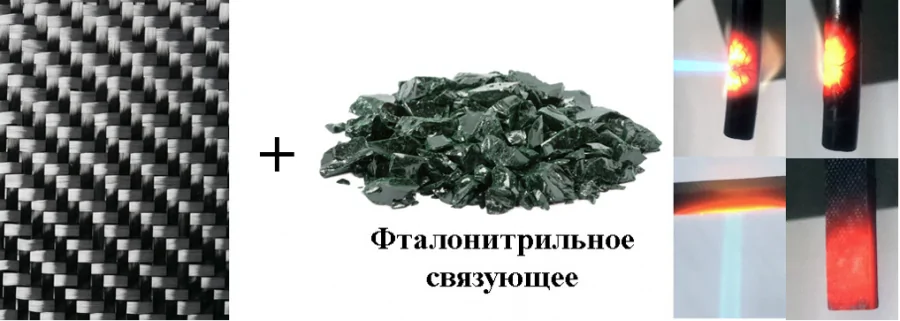
Polymer composite materials (PCM) have high specific mechanical characteristics, which allows them to be used to replace metal structures. One of the limitations of using PCM is the heat resistance determined by the polymer matrix.
Polymers obtained from phthalonitrile resins are known as the most heat-resistant (Td>400 °C) among thermosetting materials. Carbon fiber plastics based on bis-phthalonitriles are considered as alternatives to metals in the creation of first-stage compressor blades in gas turbine engines, heat shields of descent spacecraft, skin of supersonic aircraft, due to the low flammability (CI > 80%) of the interiors of submarines, tunnels and trains, electric motor housings and lithium batteries. Due to the high coke residue (up to 80%), bis-phthalonitriles are promising carbon sources for the production of agricultural composite materials.
Our laboratory is actively searching for new structures of phthalonitrile monomers, and optimizing synthesis schemes for scaling in reactors. The development of these monomers made it possible for the first time in the world to obtain PCM with phthalonitrile matrices by economically attractive methods of vacuum infusion and injection into a mold (RTM). The resulting composites retain their mechanical properties at temperatures up to 400 ℃ and have increased thermal and oxidative stability.
The developed materials have no analogues in the world in terms of their complex properties, are protected by Russian and international patents and differ from previously created ones by a number of operational and technological advantages.



